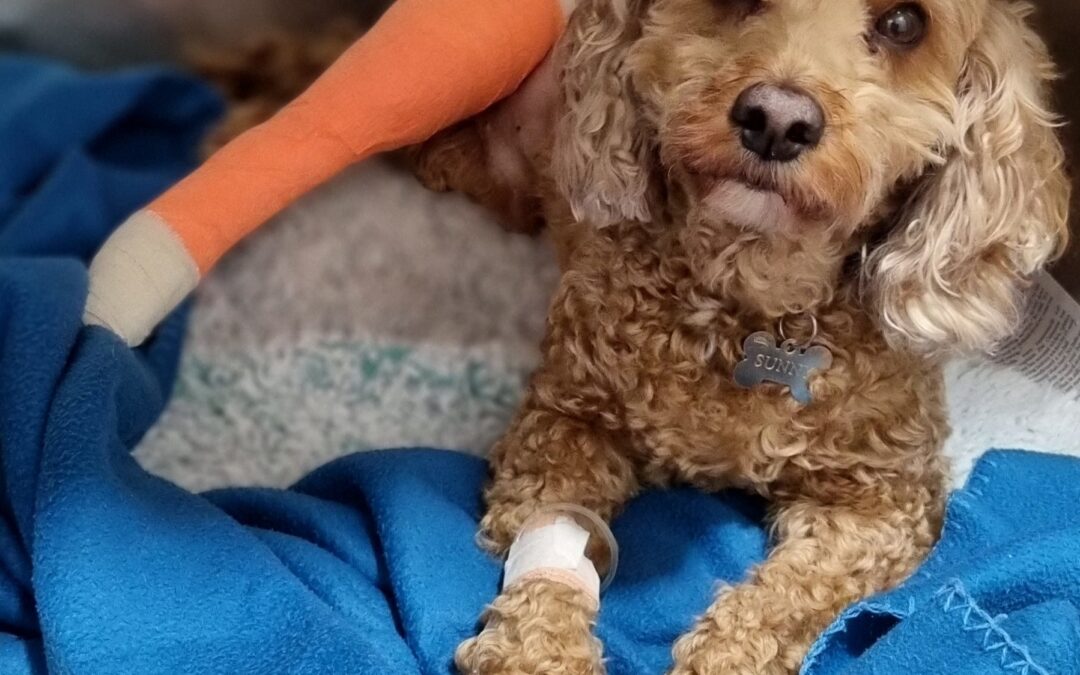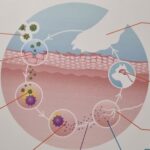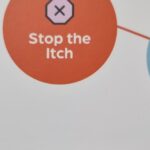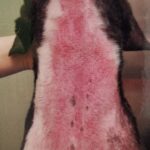Cruciate Ligament Surgery
Post Operative Instructions
Surgery:
Joint stabilization has been achieved with an extracapsular technique using two artificial ligaments made from extreme strength Ligafiba which is twice as strong as traditional nylon suture. It is also called an Extracapsular technique. The artificial ligament suture will provide adequate strength during the healing phase over the next few months.
For more information regarding the surgical technique please click here
Tonight:
The first night home can sometimes be a little restless. A few things to keep in mind
• Keep quiet and warm
• Offer a small meal
• Please plan a toilet stop before bed
• Additional pain relief medication called Gabapentin may also have been provided as this medication can help calm and settle. Please give the first dose before bed tonight if instructed to do so.
• Please ensure the leg bandage does not get wet if going outside to toilet
Tomorrow
Please give the first oral antibiotic dose tomorrow morning.
Breakfast can be offered as normal.
We will have discussed and scheduled a time for the first rehab session tomorrow morning. Generally, the day after surgery we will remove the larger compression bandage and start the first laser therapy session.
Once returning home tomorrow please continue with the pain relief and antibiotic medication as directed.
Home Care Over the next week
The post-operative care is very important to a successful and speedy recovery, with minimal complication. Recovery will be affected by a number of factors, including the extent of the damage, concurrent cartilage damage, and underlying joint disease/arthritis which may be present already.
In our experience many dogs will be able to place weight on the operated leg within the first week after surgery. We aim to slowly build on this to a consistent walk, and then gradually improving the mobility, building up the strength over the coming weeks.
Whilst some dogs may want to be too active we have to keep in mind that there is still a lot of healing and strengthening to happen. Full strength can take about 6 months, whilst most dogs have adequate strength and stability by the 12-16-week mark.
The main reasons for keeping them confined and restricted are:
- After the knee has been stabilized, the tissue around the knee joint needs time to heal and reach full strength to be able to take the load of running and jumping.
- Too much activity in the first few weeks can lead to loosening of the artificial ligament, or increased pain. This will obviously lead to reduced joint stability, and can greatly delay recovery time.
Important things to ensure;
1. Recovering pets should be kept confined indoors to a small area such as the laundry room, or for small dogs a small play pen is an ideal size. (larger areas to roam can lead to opportunity to be too active, such as getting off a bed and running to the door).
2. Provide a low excitement environment with good footing. (Carpet is better than tiles). Avoid steps or stairs.
3. Toileting should be supervised and on lead. (Sudden burst if activity off lead can lead to too much strain on the leg).
4. It is best to have low lying bedding so that they do not have to climb/jump onto anything.
5. Should not be allowed to run or jump off lead at any time during the healing and strengthening process. (12-16 weeks)
MEDICATIONS
1. PAIN RELIEF
We want to do as much as possible to reduce pain after surgery. The use of pain relief before, during, and after surgery greatly improves comfort levels in the post-op periods. Adequate pain relief also promotes a faster return to function and improved mobility which can aid the healing process and general well-being.
Opioids: Methadone pain relief injections are given prior to surgery and again upon, recovery and prior to going home. Fentanyl Pain Patch: A stronger opioid pain relief patch has also been been applied after surgery and will last for 5-7 days.
Some pets may experience a degree of nausea and go off their food in which case the patch may need to be removed sooner.
It is important to make sure that your pet is not able to chew or remove the Fentanyl patch as ingestion of any part of the patch can lead to an overdose of Fentanyl. Symptoms can include salivating, vomiting, increased sedation, disorientation. If this occurs please contact us immediately or the Animal Emergency Center (AEC – Mount Waverley ) should we not be open.
Anti-inflammatory Medication: An anti-inflammatory injection is given immediately after surgery. In addition, there will be an oral take home course of ant-inflammatory medication provided, please give as directed. These will be needed for about 2-4 weeks post op, depending on your pet’s progression and extend of the damage. (generally this will start the day after surgery)
Gabapentin: Gabapentin can help with pain, but also helps to reduce any added stress during the first few days after surgery. Please start this on the first night after returning home from surgery.
Joint injections: Additional measures such as an intra-articular local anaesthetic has also been used during surgery to provided added comfort in the immediate post-operative period.
2. ANTIBIOTICS
We follow the gold standard of infection prevention by providing three intravenous antibiotic injections given before, during and after surgery.
As a precaution a short take home course will also be provided. This greatly reduced the chance of post op injections. (Please start tomorrow morning as directed).
Ensuring that your pet is not able to lick the wound will also greatly reduce the risk of wound infection.
3. JOINT SUPPORT
All joint surgery patients will have a 4-week course of Synovan included with their procedure. Synovan also known as Pentosan is a treatment that helps joint healing by improving joint lubrication, reducing inflammation and pain, and promoting cartilage repair. Regular injections will aid the healing process in the short-term following surgery, but more importantly they can reduce the progression of arthritis, reduce pain and inflammation and subsequent degenerative joint disease that develops following Cruciate ligament disease/damage. (Synovan will commence the week after surgery)
For pets with visible signs of degenerative joint disease and osteoarthritis, (and for others as a preventative measure), maintenance treatment can be really beneficial to joint health and is recommended. Maintenance treatment may involve a booster injection every 3 months, which is only 4 treatments per year.
REHABILITATION / POST-OP MANAGEMENT
The Recovery period is as important as the surgery. We include a 4-week Rehab program tailored to each individual’s rate of recovery. This will involve 4 weekly day visits in to the hospital.
During these sessions a combination of techniques are used to improve healing and comfort levels
1. Laser Therapy – a pain free drug free alternative.
a. Promotes faster healing
b. Reduced inflammation
c. Reduces pain
2. Massage
3. Movement and mobilization exercises
After each session we will run through ’s progress and suggest a few exercises to do at home as well.
Patients generally enjoy their rehabilitation stays and feel more comfortable and mobile afterwards.
HOME REHABILITATION EXERCISES PLAN – Read more
If at any time you have any concerns, or feel that your pet has any increased pain, please don’t hesitate to get in touch. Our aim is to not only provide surgical treatment, but to make sure the recovery process is as smooth and complication free as possible.





